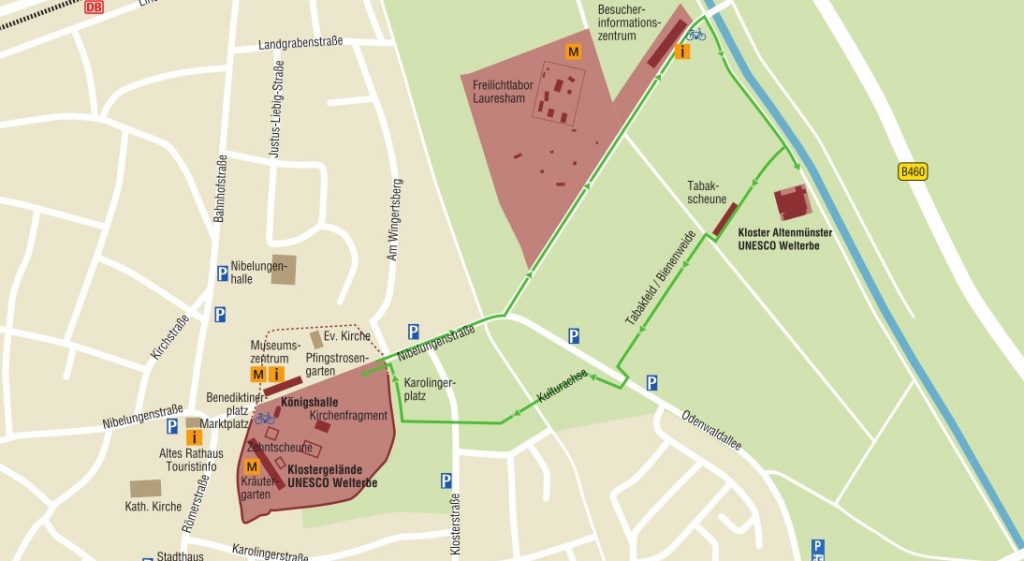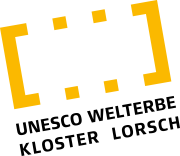
World Heritage Site Lorsch Abbey
Many people are unaware that the UNESCO World Heritage Site Lorsch Abbey consists of two core zones: the site where the abbey was founded, Altenmünster Abbey on the River Weschnitz (core zone I) and the much larger abbey consecrated ten years later in 774 by Charlemagne himself on an early glacial sand dune, located approx. 800 meters further west on the present-day outskirts of Lorsch (core zone II).
The term “World Heritage Site” refers to the approximately 24 hectares of land in between. With Altenmünster Abbey to the east, today’s Lorsch Abbey and the neighboring museum center to the west and the model of a Carolingian manor Lauresham and the visitor center to the north, which were added in 2014. These facilities are connected by an approx. 2 km long circular path called the “Culture and Nature Axis”, and the redesign of the Lorsch Monastery World Heritage Site in 2014 was the first time that both monastery areas – the early and the later monastery site – were linked together in terms of landscape architecture. This means that the UNESCO
Core Zone 1 (Altenmünster monastery)
and
Core Zone 2 (monastery dune)
(abbey dune) are combined.
Ideally, because it is chronological, you should start your tour at the visitor center or Altenmünster monastery, then approach the monastery hill through the partially renaturalized landscape and finally visit the Lauresham manor.
